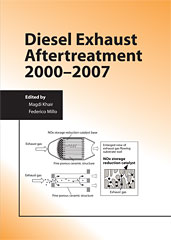Technical Paper
A Numerical Model for the Virtual Calibration of a Highly Efficient Spark Ignition Engine
2023-09-29
2023-32-0059
Nowadays numerical simulations play a major role in the development of future sustainable powertrain thanks to their capability of investigating a wide spectrum of innovative technologies with times and costs significantly lower than a campaign of experimental tests. In such a framework, this paper aims to assess the predictive capabilities of an 1D-CFD engine model developed to support the design and the calibration of the innovative highly efficient spark ignition engine of the PHOENICE (PHev towards zerO EmissioNs & ultimate ICE efficiency) EU H2020 project. As a matter of fact, the availability of a reliable simulation platform is crucial to achieve the project target of 47% peak indicating efficiency, by synergistically exploiting the combination of innovative in-cylinder charge motion, Miller cycle with high compression ratio, lean mixture with cooled Exhaust Gas Recirculation (EGR) and electrified turbocharger.


